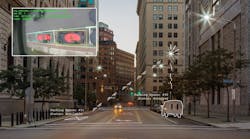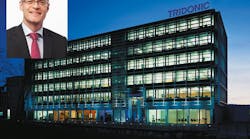Maury Wright, Editor
[email protected]
We write about LED-based lighting constantly, and a recurring theme is the energy savings that can be had in applications from residential to institutional to commercial through the broader deployment of solid-state lighting (SSL). But there may be a gremlin lurking in that optimistic outlook, according to Norman Bardsley of Bardsley Consulting. History would indicate that we may just use more light as the energy required to power lighting is reduced in terms of kWh.
Bardsley presented "The global challenge – More and better light from less energy" at the 15th-anniversary Strategies in Light conference held in February. Bardsley is very much an SSL proponent, but also tends to have a critical eye on subtleties in all of his work. Among others, his clients include the US Department of Energy (DOE).
Bardsley said 300 years of data tells us that nations spend a fixed percentage of the gross domestic product (GDP) value on light over history. He suggested that the number might be in the 1% range. And taking in the total cost of lighting — sources, systems, and energy costs — Bardsley said we could be in for a $600 billion annual productivity hit if we don't change the historical pattern.
There are many reasons that people may increase their use of lighting. Technologies such as human-centric lighting, for instance, might lead to additional SSL products installed in homes and offices. Other areas of potential increase include use in food production, more outdoor lighting for safety and security, and of course the global population increase heavily centered in urban areas.
Bardsley's talk leads to the idea that we really need to educate the global population base on the best use of light as a resource. He cited a Fraunhofer study that revealed a 47% increase in residential light usage in households that had replaced incandescent lamps with LED lamps. He said other research indicates that up to 50% of US households will simply leave lighting turned on once they have adopted SSL.
In addition with the long lifetime of LED-based lighting, manufacturers will seek more avenues to market for new lighting products because the replacement cycle can't support lighting businesses. Bardsley said we will see vigorous sales techniques that encourage the use of new lighting products.
Hopefully, society can break the 300-year trend and get on a path to lower energy usage. In a keynote speech at Lightfair International 2010, Jim Brodrick of the DOE said, "This is one of the few technologies that I've seen for 20 years at the department that can actually turn the consumption curve down." And there is some positive data in certain regions. Bardsley said the UK has witnessed a 30% reduction in energy use for residential lighting starting with the uptake of compact fluorescent lighting in 2005 and now again being impacted by SSL.
Adaptive controls could help cure the casual overuse of lighting. In some cases, however, we have to consider increased lighting good utilization. If more-efficient LEDs can help feed the world through better plant production or enrich our lives with tunable lighting, then I would call that proper utilization. But we all must do our part to avoid overlighting spaces indoors and out.
Bardsley closed by saying, "The people that think we are going to save energy are probably going to be disappointed."



![An installer uses a cell phone to configure a connected lighting system in a Next Generation Lighting Systems (NGLS) living lab. [Photo credit: Image courtesy of Pacific Northwest National Laboratory (PNNL) and NGLS.] An installer uses a cell phone to configure a connected lighting system in a Next Generation Lighting Systems (NGLS) living lab. [Photo credit: Image courtesy of Pacific Northwest National Laboratory (PNNL) and NGLS.]](https://img.ledsmagazine.com/files/base/ebm/leds/image/2020/06/NGLS_Photo_2.5ed693de53fa2.png?auto=format,compress&fit=crop&q=45&h=139&height=139&w=250&width=250)


